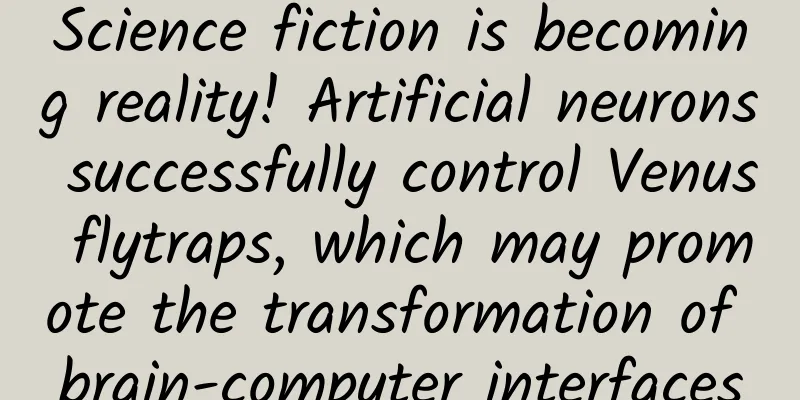DNA to Face, will it be a “silver bullet” to find people and catch criminals?

|
In the movie "Let the Bullets Fly", there is a particularly interesting plot: Huang Silang, the Lord of Goose City, was puzzled when he saw Zhang Mazi's certificate of appointment. Huang: Is this photo of you? Zhang: It’s me. Huang: This is not you. Zhang: I also said this is not me at all. I went to the photo studio to take a photo, and when I picked up the photo, they gave me this one. I said this is not me, and they said this is you. I said it is not me! They said this is you. I had no choice but to post it here. So, Zhang Mazi took office immediately. Perhaps you just think this plot is particularly funny and can be called a large-scale real-life magical realism. However, if in reality, looking for long-lost relatives or tracking down the criminals who caused the accident can only rely on such easily forged and unclear information, the entire task will become impossible. Accurately identifying a person's identity and even appearance has become a key social issue that must be solved. The most convenient and safest solution is undoubtedly DNA technology. The DNA in the human body is unique (identical twins may have the same DNA) and permanent. Therefore, DNA identification is absolutely authoritative and accurate. It is one of the most widely used and most mature crime investigation technologies in the world, and has always been considered the gold standard for finding missing people. Moreover, DNA information is difficult to completely erase. A piece of worn clothing, a piece of chewed gum, or a fallen hair can all collect DNA samples. Imagine if the appearance can be directly described based on DNA, can we quickly get key information, thereby speeding up the pace of reunion and the progress of solving the case? For example, the results of the investigation into the Xuzhou Xiaohuamei incident, which has attracted much attention, were announced not long ago. Through DNA testing and comparison, it was confirmed that Yang Mouxia is Xiaohuamei. At the same time, some netizens compared photos of Xiaohuamei and Yang Mouxia, and many people thought that they did not look like the same person. In this case, if DNA prediction and facial portraits can be generated, perhaps the facial features can be intuitively and accurately seen, effectively convincing the skeptics. In fact, the prediction of human external visible characteristics (EVCs) based on DNA information has long been applied to areas such as criminal investigation and identity confirmation. So, is it the "silver bullet" that can reopen the mystery of identity in the search for people and the arrest of criminals? DNA to Face, is it reliable? DNA phenotype is an extremely important criminal investigation tool worldwide. When the investigation is clueless, DNA phenotype can extract certain genes from individual DNA to predict individual facial features, help determine what the perpetrator may look like, further narrow the scope of suspects, and speed up the investigation process. For those who are eager to find their relatives, DNA phenotype can also help them quickly locate the faces of potential relatives, exclude candidates who do not have the relevant genetic variations at all, and help people reunite as soon as possible. (Parabon used DNA to reconstruct the face of a person later identified as the suspect in a 1987 murder case) First, we analyze genetic variation sites SNPs to determine body and facial features. These site differences often affect a series of information related to the human body, such as eye color, hair color, age, gender, height, genetic diseases, etc. Therefore, by comparing SNPs, we can get a sample of a person's facial features. Then, based on artificial intelligence algorithms and deep generative models, information related to physical features is extracted to create facial images. To ensure scientificity, each feature is often presented in the form of an accuracy percentage. For example, there is an 88.6% probability that the other person is a white male, an 88.3% probability that he has brown eyes, and only a 22% probability that he has freckles. Furthermore, even if the case happened many years ago, DNA phenotyping can be combined with AI facial recognition technology to generate what the person looked like over time, or restore what they looked like as children. If a child has been missing for several years, a lock of hair removed from the child’s comb can be used to create a set of age progression images. Ellen McRae Greytak, director of bioinformatics at DNA research company Parabon, once shared that the company has helped solve more than 200 cases in the past seven years. In 2015, Colombian police used DNA collected at the scene to generate a suspect image and arrested a man, ultimately solving a homicide case that had been unsolved for four years. The 3D image of the DNA phenotype showed that the killer should be an African Algerian male with olive skin, green eyes, plump lips and few or no freckles. (The suspect's DNA is matched with the database) Images generated based on DNA can be used together with other investigative information to generate missing person or wanted posters, which will undoubtedly make progress more efficient. It's not a silver bullet, but a sharp knife But in the eyes of ordinary people, this technology seems to be somewhat useful, but also seems to be of no use. Because, currently, DNA technology cannot accurately predict multiple facial features. The shape of the face is determined by thousands of genes, and the mark of a single feature may affect the entire facial expression, making the face shape change from masculine to feminine. This ambiguity brings challenges to subsequent tracing. In addition, DNA phenotype can only reflect genetic characteristics, but cannot show the interaction with the acquired growth environment. For example, hair dyeing, broken nose, tooth loss, etc. may change the appearance of the suspect, but they cannot be reflected in DNA. Therefore, it is impossible to predict a person's exact appearance based on DNA alone. In addition, everyone knows that deep learning models rely on large-scale data sets for training, and in the data sets of many current facial recognition systems, facial data of different races are not balanced. This will lead to very different recognition accuracy for different groups. Groups with low algorithm accuracy may easily be misjudged and convicted, bringing new unfairness. For example, in a DNA phenotype study based on the Hapmap dataset in 2019, the performance of the GLOBAL cohort (global sample) was not as good as that of the EURO cohort (European sample). One of the reasons is that Europeans have a larger scale of genomic data, so the model's recognition effect is better. And no matter where we go, we will leave traces of our DNA, such as a strand of hair left on the subway, or saliva on a glass in a cafe... When the availability of DNA samples meets the application of market-oriented services and large-scale databases, this technology creates huge privacy risks. In 2013, New York artist Heather Dewey Hagborg started an art project called Stranger Visions, which creates portrait sculptures from genetic material collected from public places. For example, from a fallen cigarette butt, DNA showed that the smoker was a male of Eastern European descent with brown eyes. (Dewey-Hagberg collects a cigarette butt in New York City at 12:15 p.m. on January 6, 2013) She input these parameters into an algorithmic model, created a 3D model of the face, and 3D printed the sculpture. It is not difficult to imagine that if this technology begins to be used on a large scale and DNA samples are everywhere, it is very likely that all your itineraries and actions will be exposed. And this day has already arrived. Currently, many overseas biological institutions and technology companies provide similar services, such as Greytak, Parabon, Corsight, etc. Human Longevity used DNA to reconstruct facial photos as early as 2017. The Colombian police created the image of the suspect through the program Snapshot developed by Parabon NanoLabs. There are also some easy-to-use facial DNA testing applications that can be downloaded for free online to help people determine ancestry, determine parent-child relationships, and find relatives. The application Face IT DNA claims to help users confirm relationships by matching more than 60 facial points. It only requires a facial recognition scan, and the matching accuracy rate is as high as 92%. Facial recognition alone certainly cannot achieve such high accuracy, and it is likely to lead to the leakage of your sensitive personal information. Some public DNA databases have also been established. GEDMatch is a free DNA test database, but after users uploaded their DNA files to GEDMatch and other websites for comparison, the relevant information was obtained by the US police, who then arrested a suspect. This use of unreasonable means to obtain personal factor data has also triggered a lot of opposition, demanding that GEDMatch restrict access to platform data. Faced with the real problems of these DNA phenotypes, biologist and engineer Yves Moreau believes that it is like a knife - people underestimate how sharp it can be. When launching a heavy attack on criminals, ordinary people may be injured first. The flaws do not outweigh the merits, it is indispensable Since DNA phenotyping still has many challenges and shortcomings, is there still a need for research? At least for now, as a new type of DNA technology, it is an area that countries cannot avoid. From a scientific point of view, studying DNA phenotypes can help all of humanity better understand who they are and clarify the origin and evolution of humanity. Although DNA cannot accurately reflect the details of an individual's appearance, it is the most reliable proof of a person's biological and ethnic ancestry. Understanding the information hidden in DNA can help us understand the migration trends, ethnic group selection, and other random influences in the course of human history. For example, markers located on the Y chromosome can only be passed from father to son and can therefore fully reflect the geographical origin of the (male) ancestors in the paternal lineage. With the help of DNA phenotyping systems, it is possible to roughly determine an individual's ancestry and infer certain externally visible characteristics based on geographic ancestry, such as blond hair, blue eyes, and light skin, which indicate that a person has at least some European ancestry. From a national perspective, many countries are currently building their own biometric databases, which are considered an important part of digital governance. For example, India's Aadhar system and the facial recognition system "The Capability" being built by the Australian government can match faces in surveillance videos with image information in driver's licenses. In the future, it will no longer be difficult to quickly find potential suspects from facial databases by combining DNA phenotypes to predict the face of the perpetrator. Establishing a large-scale database with national characteristics will become a soil for better application of technologies such as face recognition and deep learning. As some scientists have said, the more genetic data is identified, the more accurate this technology will be. This will better help reunite relatives and bring criminals to justice earlier. As for individuals, today, face recognition technology has been applied in many occasions such as access control, security inspection, mobile payment, and entering and leaving venues. Imagine that in the future, a person's appearance can be accurately reconstructed from DNA alone, and ID cards, passports, social security cards and other documents may no longer be needed. This will greatly improve the accuracy and uniqueness of face recognition scenarios. In addition, the algorithmic model of DNA phenotype can also be extended to the connection between medical images (such as brain scans) and genes, providing assistance for medical diagnosis, genetic analysis, etc., and helping to study neurodegenerative diseases such as Alzheimer's disease. Wherever we go, we leave some DNA behind. If this information is made visible, perhaps those who are unknown will have their own names. And those who do evil will also be exposed to the sun. This is the world of technology, where everything is real and visible. |
<<: Are the hazards of sitting for a long time so serious?
>>: Astronauts actually formed a band? What role did Yang Liwei play in the band?
Recommend
Find the perfect platform 8 APP testing solutions
Testing applications is very cumbersome. Where ca...
How can a startup brand carry out marketing promotion?
This article combines marketing promotion theory ...
Will highways be free during the Qingming Festival in 2022? When is Qingming Festival every year? Is it the lunar calendar or the Gregorian calendar?
Qingming Festival has both natural and humanistic ...
Beware! Scammers are targeting "young people"! !
When it comes to telecom fraud, is this the image...
Polymer fluids: Uncovering the amazing science behind everyday products
summary: As a special state of existence of matte...
4 "user retention" methods used by Facebook!
When talking about user growth, we often talk abo...
Changes in the traffic market in 2019
2019 is almost over. Looking back on this year, t...
A day's plan begins in the morning... Do you eat? Authoritative research: Skipping breakfast can damage your body!
With the development of society, in the busy work...
Run a lucky draw in 6 steps and double your Weibo followers!
Lucky draw activities are an important tool for i...
With an annual output of 350 billion, China's automotive chips are accelerating the de-Americanization, and Bill Gates' prediction is about to come true
In fact, what is more worrying than the "inv...
The real estate information flow promotion optimization methodology hides so many secrets!
As spring arrives and flowers bloom, the peak sea...
Let iPhone connect to the Internet? iOS 10.2 hidden function exposed
OS has always been able to adapt to Ethernet conne...
Taking multivitamins actually increases mortality? We should stop taking them? This is a misunderstanding →
gossip “Does taking multivitamins increase mortal...
Here are 3 suggestions for your “big life events” in the coming year…
In the new year, everyone should have a new look....









